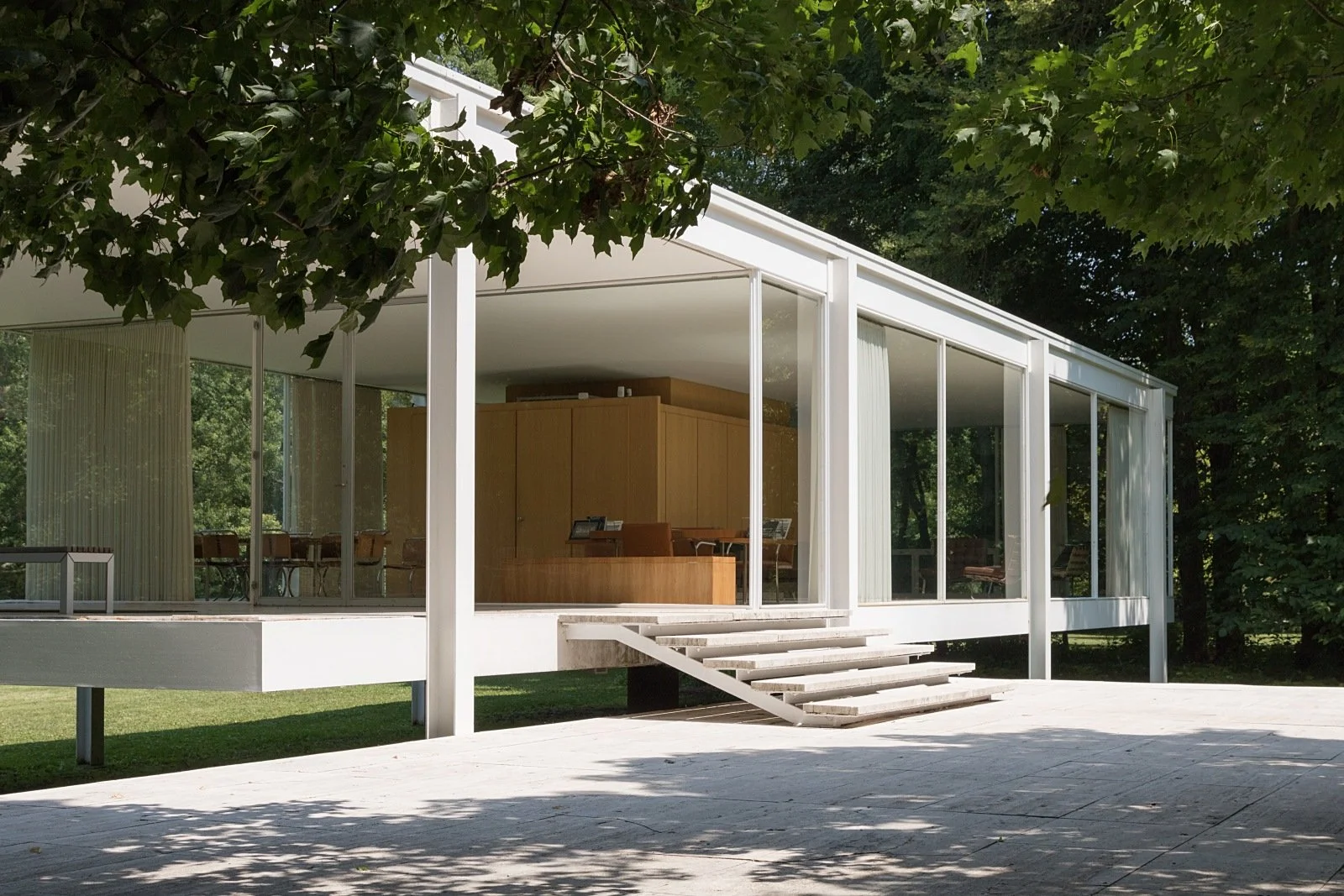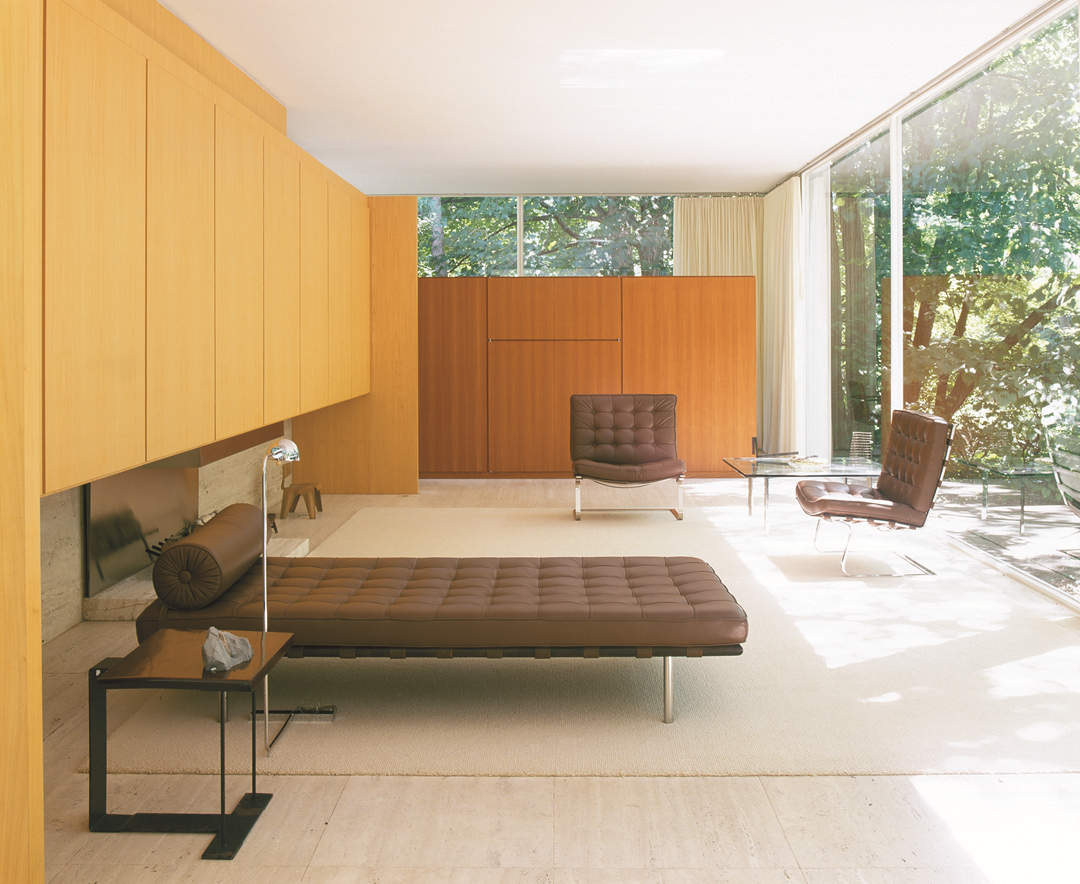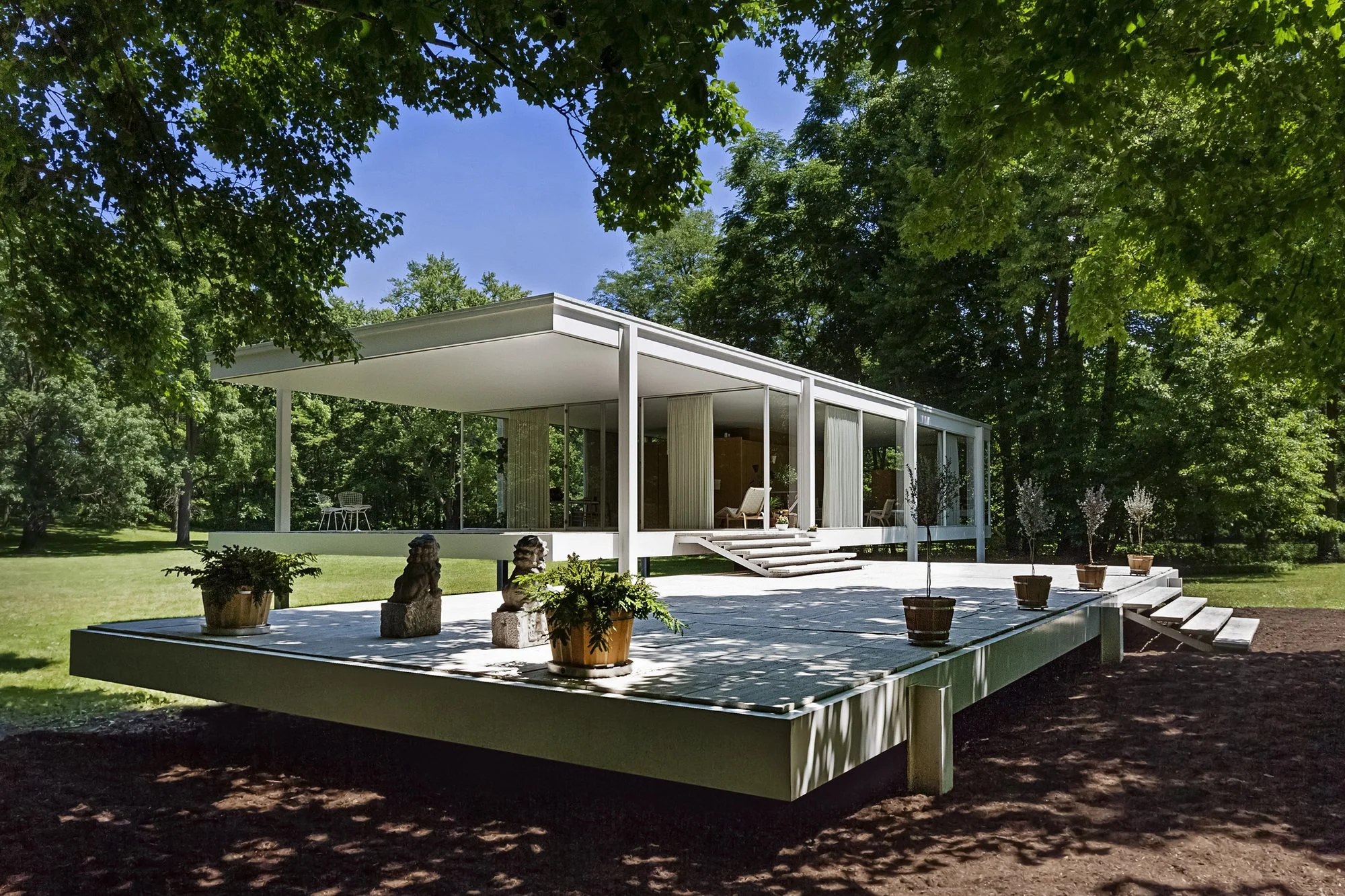The Farnsworth House: Mies van der Rohe’s Transparent Masterpiece of Modern Living
You don’t have to be an architect to feel something when you look at the Farnsworth House. One glance at its floating white frame, held just above the ground and surrounded by green — or snow, or fog — and you're caught in that quiet tension between structure and nature.
This is minimalism in its purest form. A house made of almost nothing. And somehow, it says everything.
As a long-time admirer of Mies van der Rohe — especially after diving deep into his Barcelona Chair in one of our earlier posts — I’ve always found the Farnsworth House both stunning and a little haunting. It’s a masterclass in restraint, balance, and bold conviction.
Let’s explore why this house is one of the most influential designs of the 20th century, the fascinating story behind its creation, and how it continues to shape the conversation around architecture, design, and the idea of “home.”
The Philosophy Behind the Design
If you know the phrase “Less is more”, then you know Mies.
The Farnsworth House, completed in 1951 in rural Plano, Illinois, is one room, two slabs, eight columns, and a whole lot of glass. It’s Mies’s ultimate expression of his minimalist, international style — and of his belief that architecture should not dominate nature, but exist within it.
Here’s how it works:
One long rectangle of space — no internal walls, just flowing zones.
Floor-to-ceiling glass walls on every side, turning the house into a frame for the landscape.
A floating structure, elevated on steel columns to hover above the floodplain and appear weightless.
It’s often described as a temple to modernism — and looking at it, it’s not hard to see why.
The Client Who Made It Happen
One of the most fascinating aspects of this house? It wasn’t built for a design collector or an art institution. It was commissioned by Dr. Edith Farnsworth, a brilliant Chicago physician and kidney specialist who wanted a quiet weekend retreat by the Fox River.
Farnsworth and Mies initially had a warm, shared respect. She wanted a minimalist escape where she could read, write poetry, and enjoy solitude in nature. Mies delivered... perhaps a little too literally.
By the time the project was completed, the two were no longer speaking. Disagreements over cost overruns, functionality (there was no privacy, little storage, and frequent overheating), and the sheer extremity of the design led to a bitter falling out. Farnsworth famously called it a “glass cage.”
But for design lovers, the result is one of the purest modernist houses ever built.
Design Details That Make It Legendary
Raised Above the Ground: The house rests on thin white steel columns, lifting it 5 feet above the ground to protect from flooding (though it still floods, ironically). It also creates a dramatic, almost spiritual sense of lightness.
No Interior Walls: The house has a single open room with carefully placed furniture creating invisible “zones.” A central service core houses the bathroom and kitchen.
Every Detail Was Considered: Mies designed everything — even the clothes Edith might wear — to fit his vision. It was a total design concept, a lifestyle, not just a house.
Surrounded by Nature: The house is more landscape than home. Trees, river, sky — they aren’t scenery, they’re part of the architecture.
Did You Know? Lesser-Known Stories
It Was Originally Unfurnished: Mies intended it to be an empty space — pure architecture. But Farnsworth wanted comfort and eventually filled it with her own pieces.
It Inspired Countless Glass Houses: From Philip Johnson’s Glass House (built two years later) to homes all over the world, the Farnsworth House became the blueprint for minimalist modernism.
It Became a Landmark — Eventually: After decades of change and near-demolition, the house is now preserved by the National Trust for Historic Preservation and open to visitors.
It Floods Regularly: Despite being raised above ground, it sits in a floodplain and has suffered significant damage over the years. There are now plans to raise it on a hydraulic lift to protect it long-term.
Why It Still Matters in 2025
The Farnsworth House is not a house you’d want to live in every day. It’s challenging, uncompromising, and relentlessly honest.
But that’s also what makes it essential.
In a world of clutter, this house teaches us about space and silence.
In a culture of consumption, it reminds us that restraint can be luxurious.
In design, it reminds us that clarity is powerful.
It’s not about comfort — it’s about idea-driven living. And for lovers of design, that’s a compelling proposition.
Wrapping Up the Series
With the Farnsworth House, we close this small but special series on the world’s most iconic homes — from the glass-walled glamour of the Stahl House, to the poetic immersion of Fallingwater, to the creative joy of the Eames House, and now to the purest of modernist temples.
Each of these homes isn’t just about design — they’re about philosophy, risk, and lifestyle. They were dreamed up by people who believed in something, and they remind us that architecture is never just buildings — it’s culture, vision, and hope.





